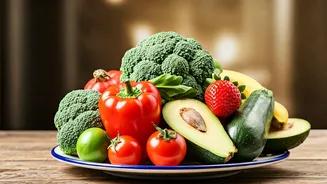Foundation: Feng Shui Basics
Feng Shui, an ancient Chinese practice, focuses on harmonizing individuals with their environment. The core concept revolves around the flow of 'chi' or energy,
aiming to create balance. In the kitchen, this translates to the arrangement of elements to enhance positivity. It is believed that aligning the kitchen with Feng Shui principles can improve overall health, wealth, and relationships. The key elements to consider are the placement of the stove (representing fire) and the sink (representing water). These two elements should ideally be separated to avoid conflict, which can disrupt the flow of positive energy. The goal is to create a space where chi flows smoothly, fostering a sense of calm and well-being. This balance is crucial for a kitchen that supports both physical and emotional nourishment.
Stove Placement Essentials
The stove is the focal point of the kitchen, representing wealth and nourishment. Its positioning is, therefore, of utmost importance. The ideal placement for a stove is against a solid wall, providing support and protection, and it should not be directly opposite the kitchen door, as this can cause energy to escape. The cook should also have a clear view of the entrance, allowing them to see who is entering. Ensure the stove is not under a window or directly facing a bathroom door, both of which can lead to energy loss. Avoid placing the stove near the sink, refrigerator, or other water elements. If a kitchen island is used, ensure the stove is positioned thoughtfully, considering the overall energy flow. Choosing a stove that is aesthetically pleasing while also aligning with Feng Shui principles can greatly enhance the overall feel of the kitchen.
Sink Placement Considerations
The sink, linked to water and cleansing, demands equally careful consideration in Feng Shui. It should never be placed directly opposite the stove, as water (sink) and fire (stove) conflict with each other, creating imbalance and potentially leading to financial instability. The sink should not be positioned near the stove or directly in line with the front door. This can drain the positive energy from the home. If possible, situate the sink near a window to allow natural light and fresh air, enhancing its cleansing properties. Ensure the sink area is kept clean and tidy, as this promotes a sense of order and well-being. Avoiding the clutter of dirty dishes is a fundamental principle. If possible, consider the direction in which water flows away from the sink. The goal is to position the sink in a way that allows for easy access and promotes a sense of tranquility.
Layouts: Optimizing Harmony
Several kitchen layouts can facilitate the principles of Feng Shui. The 'Work Triangle' is fundamental: the stove, sink, and refrigerator should form a triangle, but never be in direct alignment. This ensures ease of movement and balanced energy flow. In a galley kitchen, the stove and sink can be placed on opposite sides, with sufficient space between them. For L-shaped kitchens, consider placing the stove on one leg and the sink on the other, ensuring they are not directly facing each other. An island kitchen offers flexibility, but the stove should not be directly opposite the sink. If the kitchen is small, the separation between the stove and sink becomes even more critical. Assess the available space and choose a layout that best accommodates these principles without compromising functionality. The placement of other elements like the refrigerator and dining area also influences the overall balance of the kitchen.
Colors: Choosing Wisely
Color selection in the kitchen should support energy flow. Certain colors resonate with specific elements and can either enhance or diminish the kitchen’s overall balance. Earthy tones like beige, light browns, and greens are excellent choices as they provide stability. These colors represent the earth element and ground the energy. Avoid excessive use of red, which represents fire, as it can overwhelm the space, especially near the stove. Blue and black, representing water, should be used sparingly near the stove area but can be helpful near the sink. White is a versatile color that can balance the various elements, but ensure it is not used in isolation, as it can create a stark feeling. The right color palette should create a sense of harmony and invite a flow of positive energy. The goal is to establish a calm environment for cooking and dining.
Common Mistakes to Avoid
Certain common kitchen design choices can negatively affect Feng Shui. Avoid placing the stove directly in line with the front door, as it represents a loss of wealth. Never position the stove under a window, as it can lead to financial losses. A stove that is dirty and neglected can also be detrimental. Make sure to keep it clean. Avoid having the sink and stove directly opposite each other, as it creates an energetic conflict. Furthermore, clutter and disorganization in the kitchen can block the flow of chi, creating negative energy. Ignoring these common pitfalls will ensure that the kitchen is a haven of positive energy and a place of well-being. Proper Feng Shui is as much about what to avoid as what to incorporate in the design.
Final Thoughts: Implement & Thrive
Implementing Feng Shui principles in your kitchen is an ongoing process. Making small changes can lead to significant improvements in the overall energy of your home. Evaluate your current kitchen layout, considering stove and sink placements. Gradually introduce color and décor elements that support balance and harmony. Regularly declutter the space to allow for the smooth flow of energy. Take the time to understand the principles and apply them to create a kitchen that is functional and supportive. Embrace these changes, and you will begin to notice a shift in your home's energy and, potentially, in your overall well-being. Remember, it's about creating a kitchen space that fosters balance and contributes to your life's harmony.














